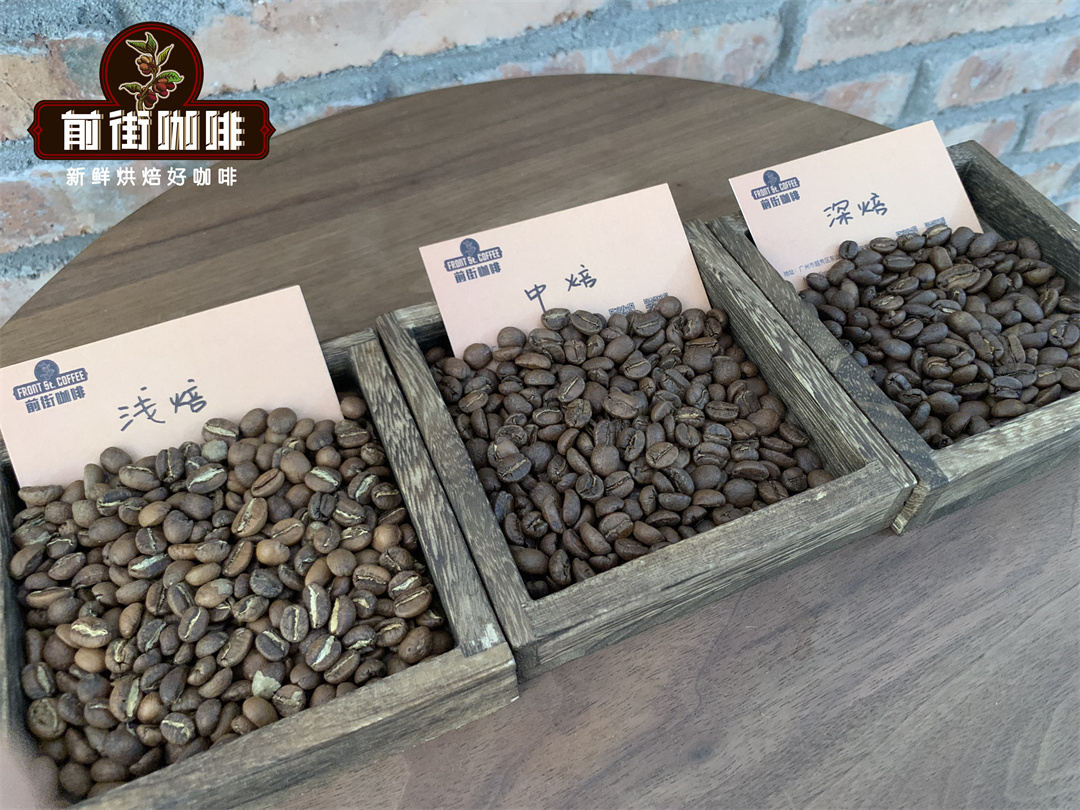What are the techniques for roasting coffee? there are a variety of substances in the roasting process.
Baking is an alchemy that not only transforms and merges, but also remains mysterious and magical. It determines the typical aroma and flavor of the unique drink we commonly call "coffee", which is a necessity for billions of people around the world. If coffee trees were found in medieval Europe, then some coffee lovers are likely to go to the fire like witches!
Roasting is one of the basic stages of processing coffee beans. It not only makes raw coffee edible, but also gives each coffee mixture its own aroma and sensory characteristics. In the roasting process of boutique coffee, heating the coffee beans will cause transformation, resulting in highly complex ingredients and aroma.

Baking
In traditional baking methods, in a large rotary drum, coffee beans are heated to a temperature gradually rising to between 200 and 230 °C for about 12 to 15 (and in some cases 20) minutes.
The beans are dried at 100 °C, and when the baking aroma begins to release, they turn golden.
As roasting continues from 150 to 180 °C, the coffee beans increase in volume and become larger, glossy and begin to turn distinctive brown.
At 200-230 °C, the roasting reaches the best level, and the coffee beans gain a familiar rich brown, while losing weight and becoming brittle. Coffee acquires its unique aroma. Beans experience a steady and necessary loss of carbon dioxide within a few days after baking.
For the strongest baking, the absolute maximum is 240 °C. Beyond this point, coffee may self-ignite.
The process must end at the right time.
Overbaking destroys essential volatile aromatic compounds and destroys the ideal balance of acidity and bitterness. This is why once the coffee is extracted from the roaster, the coffee is quickly adjusted to room temperature through the airflow.
Baking is now complete, and a critical, calibrated, air-cooling phase begins to take effect, literally preventing the cooking of coffee beans, keeping the aroma intact, and keeping the mixture at its best.
What happens during the baking process?
Roasting is the coffee time: 15 minutes is the critical time, with about 800 substances appearing under heating, each contributing to the taste and aroma of the mixture and its tradition.
In the delicate baking stage, the raw beans have changed. They change color, lose weight, increase volume, lose moisture and, above all, gain aroma.
Some initial features disappear or decrease, and new features appear.
In this process, coffee has undergone major physical and chemical changes.
The analytical chemical-physical transition is when coffee beans undergo heating (during the baking process) that defines roasting from a technical and scientific point of view.

It can be concluded that the main physical changes of coffee beans are as follows:
Due to the evaporation of water and organic matter, the weight is reduced by about 15% to 20% (with the loss of water, the water content which was hovering around 11% dropped to only 1%)
Due to the air pressure formed inside the coffee beans, the volume is 40% to 60% higher than that of the original product.
The consistency of its structure is different, from hard and elastic to fragile, low density and many pores.
The color changes from green (the brownish yellow of Arabica coffee or robusta coffee) to brown because sugar is caramelized and cellulose carbonized
In addition, coffee beans lose their remaining silver sheaths during baking, which are more or less completely eliminated.
Chemical modification involves the reduction of a variety of components, such as sugar (Maillard reaction, one of the most important reactions, in which the sugar in coffee is pyrolyzed and converted, caramelized), water (reduced about tenfold), chlorogenic acid and trigonelline, its reduction makes future espresso easier to digest.
Caffeine content remains almost constant, causing certain elements of unpleasant smell in raw coffee to disappear almost completely.
At the same time, due to the pyrolysis process (the internal transformation of coffee beans due to heat) and the interaction between various elements such as sugar and protein, hundreds of different volatile compounds begin to explode during baking, and we owe the special aroma of coffee.
The longer the time, the bigger the bean appears during the roasting process, which determines the peculiar aroma of coffee. The same number of oil droplets is created as floating essential oil (that is, the same oil is deposited on the equipment).
Important Notice :
前街咖啡 FrontStreet Coffee has moved to new addredd:
FrontStreet Coffee Address: 315,Donghua East Road,GuangZhou
Tel:020 38364473
- Prev

One way to tell the difference between espresso and cappuccino or latte
Water, coffee, air and milk. These are the four basic elements of Italian cafe recipes, and cappuccino is one of its hallmarks. As it passes through a layer of finely ground coffee, the softened water absorbs typical features and is transformed into an elegant espresso, covered with iconic nut brown cream and a classic aroma. In the meantime, the steam stick will
- Next

Why Rainforest Alliance Certified Coffee Matters What are the Benefits of Rainforest Alliance Certified Coffee
How much does coffee cost? When it comes to your bottom line and satisfying your daily coffee drinking habits, there are a few other things we need to consider besides the cost of coffee. Specifically, the impact of coffee beans on the environment, the conditions of workers, how coffee is transferred from the field to the cup, etc. Front Street Coffee believes that whether it is made at home or paid for by a barista, it should be considered
Related
- What brand of black coffee is the most authentic and delicious? what are the characteristics of the flavor of the authentic Rose Summer Black Coffee?
- Introduction to the principle and characteristics of the correct use of mocha pot A detailed course of mocha pot brewing coffee is described in five steps.
- Which is better, decaf or regular coffee? how is decaf made?
- How much is a bag of four cat coffee?
- How about four Cat Coffee or Nestle Coffee? why is it a cheap scam?
- Which is better, Yunnan four Cats Coffee or Nestle Coffee? How about cat coffee? is it a fake scam? why is it so cheap?
- How about Cat Coffee? what grade is a hoax? which instant coffee tastes better, four Cat Coffee, Nestle Coffee or G7 coffee?
- Process flow chart of coffee making-Starbucks coffee making process what coffee tastes good at Starbucks
- The top ten best coffee beans in the world Rose summer coffee or Tanzanian coffee tastes good
- Yunnan four cat coffee is good to drink?_four cat coffee is a big brand? four cat blue mountain coffee is fake?

